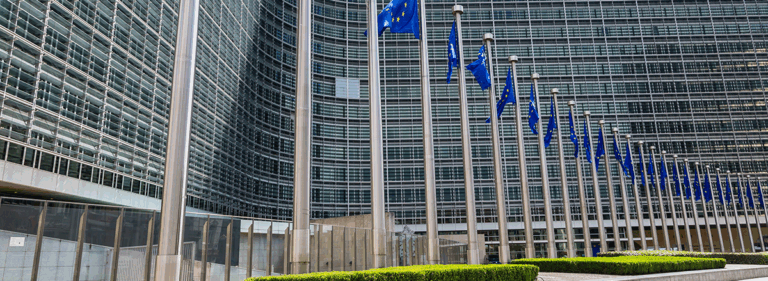The AI Action Summit and beyond: 3 Steps to strengthen global AI collaboration

Beginning with Bletchley Park in 2023 and Seoul in 2024, the AI Summit series has reached a pivotal moment. The upcoming AI Action Summit in Paris from February 10-11 will provide a unique platform for multilateral coordination and could bring significant progress to the global dialogue on AI governance.
The Summits have brought world leaders together to address some of the most pressing challenges in AI. Together, they committed to developing safe AI in the public interest and launched concrete deliverables to achieve shared goals, not least of which was establishing AI safety institutes. The AI Summits are another effective way to create dialogue between key players and complement more formal avenues of cooperation, such as the G7, G20, OECD, and UN.
But how can this positive impact be sustained and amplified? The momentum around next month’s AI Action Summit presents an opportunity to ensure this model remains relevant in the long term.
To do so, we propose three crucial steps to turn this year’s summit into an ongoing success: 1) prioritise impact with an agenda for collective action, 2) unite voices through inclusive dialogue, and 3) lay the right foundations by choosing a well-adapted host country.
Prioritise impact with an agenda for collective action
To serve a clear purpose, the Summits must have clearly defined agendas designed through a thoughtful, inclusive process.
The agenda should have a clear and realistic scope to complement the missions of other entities and avoid mission creep. Topics should reflect what stakeholders collectively consider AI governance’s most pressing challenges. Given the speed of developments and recent technological breakthroughs, upcoming summits are likely to focus on frontier general-purpose AI and agentic AI.
The summit itself should include multiple tracks tailored to different stakeholder groups, ensuring both focus and inclusivity.
Like this year, preparation should begin by assembling a diverse steering committee with representatives from governments, civil society, academia, and industry. This committee would proactively gather input from a broad spectrum of stakeholders to set the summit’s scope, agenda, and deliverables. Having a clear direction and purpose will solidify the summit’s legitimacy and reach by including perspectives from underrepresented regions and communities.
The multi-stakeholder process should be iterative and flexible, offering stakeholders many opportunities to engage through workshops, virtual forums, surveys, and regional dialogues. This ensures that a narrow group of interests does not direct the summit agenda and reflects the priorities and concerns of the global AI governance community.

Unite voices through dialogue with a broad range of stakeholders
Working groups assembled around diverse areas of expertise drive the summit’s preparation when they converge to tackle specific issues. In future summits, they should continue to include experts from diverse backgrounds, including those from academia and civil society organisations.
To be effective, these working groups must have:
- Well-defined mandates,
- Transparent operations,
- Clear rules about who can join and how,
- Balanced representation across regions and sectors.
Attention should be paid to incorporating voices from the Global South, which is often underrepresented but disproportionately affected by global AI developments.
Key focus areas for future working groups could include:
- Developing technical standards to ensure AI safety and reliability.
- Evaluating how AI governance needs to be adjusted for agentic AI and other forthcoming advancements in AI capabilities.
- Sketching out an ecosystem of AI audits and defining its role, relevant stakeholders, and the regulatory frameworks necessary to support it.
- Defining risk thresholds and red lines for AI development.
- Assessing nascent AI regulatory regimes.
- Exploring the economic implications of AI on labour markets and innovation ecosystems.
- Assessing the impact of AI on power dynamics and existing inequalities.
- Assessing the broader social impacts of AI, particularly on marginalised communities.
With clear, timely deliverables, these groups can drive actionable outcomes that are relevant beyond the summit.
Diverse actors can contribute insights to the working groups. Notably, civil society organisations (CSOs) can bring crucial insights and grassroots perspectives that help ground AI governance in the realities of diverse populations. The AI Action Summit in France recognised this and received support to consult citizens and experts. In fact, one-third of the Summit’s participants will be from civil society. Future summits should continue to include civil society from preparation to the event itself.
Summits should provide a mix of solutions to address barriers to participation. These include clear guidelines for how CSOs and academia can engage, open communication on how CSOs’ input has helped shape the agenda, a dedicated quota of travel grants, virtual participation options, early communication regarding invitations, and the provision of financial resources to support CSOs’ engagement.
Hybrid participation platforms can help bridge geographical divides by enabling remote stakeholders to engage in discussions. Examples of how this can work include webinars hosted by the 2025 AI Action Summit for CSOs to keep civil society informed of planning developments. Technology can further support such efforts. Features like real-time translation services, secure voting mechanisms, and advanced collaboration tools in working groups can ensure that language and logistical barriers do not impede meaningful contributions.
Digital infrastructure can enhance participation and support comprehensive documentation and knowledge management. A centralised platform for recording discussions, decisions, and action points can serve as a living knowledge repository, enabling continuity and progress between summits. This is particularly important given that there is no centralised host institution for those summits.
Lay the right foundations by choosing a well-adapted host country
A final question comes to mind as we consider future AI Safety Summits: where should the next one take place? For this important decision, there are two crucial questions to filter potential summit hosts: Is there a demonstrated commitment to AI governance? Does the country already engage with AI governance on an international level?
An assessment of a potential host’s commitment to AI governance could include identifying whether the country has:
- A developing ecosystem of AI policies, regulations, and standards–particularly if they aim to address systemic risks posed by frontier AI, for example, in relation to topics such as cybersecurity, vulnerability to misuse, democratic manipulation, or deepening inequalities.
- Adopted ethical AI frameworks, considering AI’s impact on human rights, ensuring the protection of vulnerable groups of society, and providing sufficient data protection are essential.
- The presence, funding, and relevance of an AI safety or evaluations institute that is mandated to conduct evaluations of advanced AI models and build an evidence base for AI impacts. The presence of relevant actors, such as research institutions, could also be relevant.
For international positioning, determining factors could include assessing whether the potential host country demonstrates:
- Active participation in international governance fora on AI, demonstrated by previous engagements with global AI actors, such as at past AI Summits or through intergovernmental institutions like the UN, G7, G20, OECD, or UNESCO.
- Diplomatic neutrality to encourage participation from all major AI powers, including the United States and China. This is the only way the Summit can promote a truly global dialogue. Strong diplomatic relationships with a broad range of countries worldwide can also ensure the representation of diverse voices from around the world, including the Global South.
- Participation in the Network of AI Safety Institutes, which shows expertise and engagement with global AI governance. The list of potential host countries should not be restricted to only members of the Network, but this can be an important factor to consider.
Additionally, hosts must have the basic infrastructure to organise and execute a successful summit, including modern conference facilities equipped with cutting-edge technology, robust cybersecurity, reliable international transport links, and strong digital connectivity.
These considerations can help the organisers make an informed choice for the host country. An online poll of over 800 participants in the Sixth Edition of The Athens Roundtable on AI and the Rule of Law identified various contenders, as did the insights from the consultation of civil society and experts that took place in the run-up to the AI Action Summit. Candidates include Singapore, Canada, Kenya, Brazil, India, Switzerland, and Belgium.
Transforming the Global AI Summit series into a sustainable platform for international collaboration
Implementing these elements can pave the way toward a more structured AI Summit series, ensuring its long-term success and continuity. While maintaining its flexibility to react to the evolving AI landscape, features of such a platform could include: permanent staff, a coordination arm, or a manifesto outlining the summit’s scope and objectives.
When planning the success of future summits, evaluating the predecessors can serve as a starting point. Aside from looking at the deliverables, such reflections should consider factors such as the diversity of participation, the quality of dialogue and level of engagement, the strength of new partnerships and collaborations, and tangible impacts on global AI governance.
The need for coordinated global action for AI governance has never been greater. By implementing these ideas systematically, future global AI Summits can transform into dynamic platforms for meaningful dialogue, practical progress, and sustained international cooperation. This way, they can build on the momentum created by the AI Action Summit and its predecessors. Success lies in carefully orchestrating diverse elements that can facilitate collaboration and innovation. By doing so, these summits can help chart a course toward a more equitable and responsible future with AI.




































